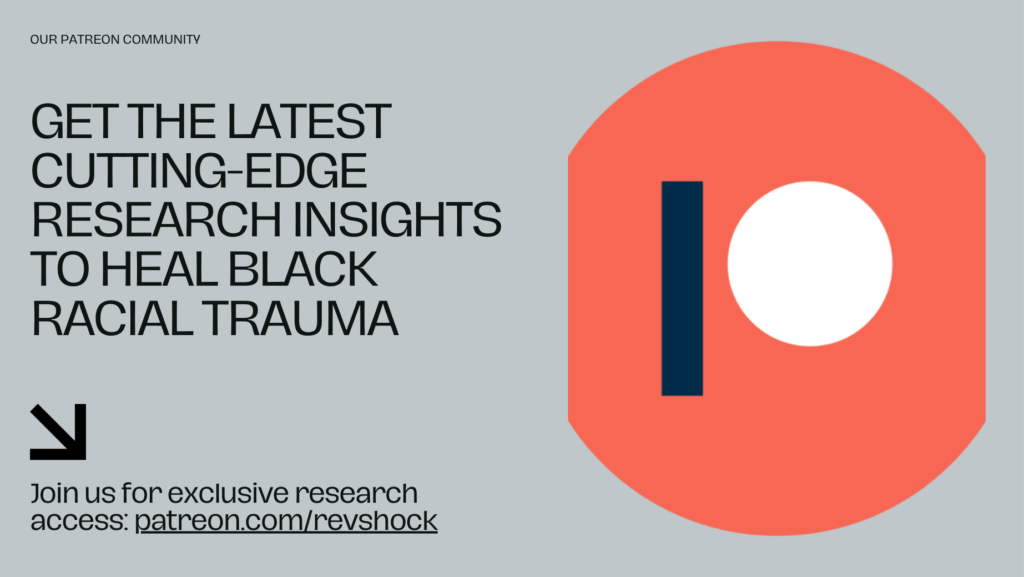
Powered By BlackTraumaGPT.com
Researched and Curated By Rev. Dr. Philippe SHOCK Matthews
(Black Trauma and Mental Health Specialist | Prompt Eng | GPT Dev | Research Scientist | Africana Phenomenologist | Black AI Corsortim co-Founder | Black Mental Health Podcast Host)

In our exploration of race technology, we now turn to the second critical component: stating. How the act of stating – the way 2nd frequency talks about, describe, and frame issues of race – plays a crucial role in perpetuating racial hierarchies and inequalities.
The stating technology goes beyond mere words; it encompasses the entire discursive framework through which we understand and discuss race. This includes everyday conversations, media representations, academic discourse, and legal language. The power of stating lies in its ability to shape perceptions, reinforce stereotypes, and normalize racial hierarchies.
One of the most insidious aspects of the stating technology is how it often operates beneath the level of conscious awareness. As Toni Morrison astutely observed:
“The function, the very serious function of racism is distraction. It keeps you from doing your work. It keeps you explaining, over and over again, your reason for being.”
This constant need to explain, to justify, to counter negative stereotypes – all of these are manifestations of the stating technology at work.
The roots of this technology can be traced back to the earliest days of European colonialism and the transatlantic slave trade. As Europeans sought to justify their exploitation and enslavement of African peoples, they developed a complex lexicon of racial terminology and ideas. This vocabulary wasn’t just descriptive; it was prescriptive, creating and reinforcing ideas about racial differences and hierarchy.
Consider, for example, Thomas Jefferson’s writings in his “Notes on the State of Virginia” (1785). Jefferson, despite his lofty rhetoric about equality in the Declaration of Independence, stated of African Americans:
“They secrete less by the kidnies, and more by the glands of the skin, which gives them a very strong and disagreeable odour… They are more ardent after their female: but love seems with them to be more an eager desire, than a tender delicate mixture of sentiment and sensation.”
These statements, coming from a figure of Jefferson’s stature, carried enormous weight. They weren’t just personal opinions; they became part of the accepted “knowledge” about racial differences, influencing policies and attitudes for future generations.
The power of stating as a race technology lies not just in explicit racist statements but in the subtle ways race is framed and discussed. Consider how we often use racial identifiers for people of color but not for white people. We might say “the Black doctor” or “the Asian lawyer,” but rarely “the white teacher” unless race is specifically relevant to the context. This asymmetry in stating reinforces the idea of whiteness as the default, the norm against which other races are measured.
As Dr. Robin DiAngelo points out in her work on white fragility:
“The most effective adaptation of racism over time is the idea that racism is conscious bias held by mean people.”
This statement highlights how the technology of stating has evolved. Overt racist language may be less socially acceptable now, but racial biases continue to be expressed and reinforced through more subtle forms of discourse.
The media plays a crucial role in the technology of stating. How news stories are framed, the language used to describe different racial groups, and the types of stories highlighted or ignored all contribute to our collective understanding of race. For instance, studies have shown that media coverage often portrays crimes committed by people of color differently than those committed by white individuals, using more dehumanizing language and focusing more on group characteristics rather than individual circumstances.
Academic discourse, too, is not immune to the influence of stating technology. The very terms we use to discuss race – words like “minority,” “underprivileged,” or “at-risk” – can subtly reinforce racial hierarchies and deficit-based thinking. Even well-intentioned efforts to address racial issues can sometimes perpetuate harmful narratives if not carefully examined.
Legal language provides another powerful example of stating technology at work. How laws are written and interpreted can profoundly impact racial equity. Consider the shift from explicitly racist laws during the Jim Crow era to the supposedly “color-blind” policies of today. While the language may have changed, the outcomes often continue to disadvantage people of color. As Michelle Alexander argues in “The New Jim Crow”:
“We have not ended racial caste in America; we have merely redesigned it.”
This redesign is largely accomplished through the technology of stating – using language that appears neutral but continues to perpetuate racial hierarchies in practice.
One of the most potent aspects of stating technology is its ability to shape self-perception among both dominant and marginalized groups. Frantz Fanon, in his seminal work “Black Skin, White Masks,” explored how the language of colonialism and racism is internalized by the colonized, leading to a kind of psychological oppression. He wrote:
“The Negro enslaved by his inferiority, the white man enslaved by his superiority alike behave in accordance with a neurotic orientation.”
This insight highlights how the technology of stating doesn’t just affect how different racial groups perceive each other, but how individuals understand themselves and their place in the world.
The stating technology also manifests in what is left unsaid – in silences and omissions. The failure to acknowledge historical injustices, the glossing over of ongoing racial disparities, the reluctance to engage in substantive discussions about race – all of these silences speak volumes. As Audre Lorde famously said:
“Your silence will not protect you.”
Breaking these silences, naming and discussing racial realities, is crucial in dismantling the stating technology.
In my research, I’ve observed how the technology of stating interacts with and reinforces the other components of race technology. How we classify races influences how we talk about them, which affects policies around mixing and spacing. It’s a self-reinforcing cycle that requires conscious effort to disrupt.
One particularly pernicious aspect of stating technology is how it can co-opt and neutralize language intended to challenge racial hierarchies. Terms like “diversity,” “inclusion,” and even “antiracism” can be emptied of their radical potential and turned into corporate buzzwords that do little to address systemic inequalities. As Ibram X. Kendi warns:
“The opposite of ‘racist’ isn’t ‘not racist.’ It is ‘antiracist.'”
This distinction is crucial. The technology of stating often allows people and institutions to claim they are “not racist” while continuing to perpetuate racial hierarchies through their words and actions.
The stating technology also manifests in discussing racial progress and setbacks. Narratives of linear progress – the idea that things are consistently improving for people of color – can obscure ongoing injustices and lull us into complacency. Conversely, narratives of insurmountable racial conflict can lead to hopelessness and inaction. Threading the needle between acknowledging progress and recognizing ongoing challenges is a delicate but necessary task.
So, how do we begin to dismantle the technology of stating? The first step is awareness—becoming conscious of how we talk about race and the implicit messages our language carries. This requires a willingness to examine our own speech and thought patterns, question our assumptions, and listen deeply to perspectives different from our own.
Once again, education plays a crucial role. We need to teach critical media literacy, helping people understand how racial narratives are constructed and perpetuated. We need to promote diverse voices in literature, journalism, academia, and all forms of public discourse. We need to create spaces for honest, nuanced discussions about race that go beyond simplistic narratives of good and evil.
Language is a powerful tool, and it can challenge and reinforce racial hierarchies. We can shift the discourse by developing new ways of talking about race, identity, and difference. This might involve creating new terms, reclaiming old ones, or finding ways to express complex racial realities that don’t rely on outdated binary thinking.
It’s also crucial to recognize the role of storytelling in shaping our understanding of race. As Chimamanda Ngozi Adichie warns in her famous TED talk, there is a danger in a single story. By amplifying diverse voices and experiences, we can create a richer, more nuanced understanding of racial realities.
Ultimately, dismantling the stating technology requires a commitment to truth-telling, even when it’s uncomfortable. It means being willing to name racism when we see it, to challenge harmful narratives, and to engage in difficult conversations. As James Baldwin reminds us:
“Not everything that is faced can be changed, but nothing can be changed until it is faced.”
As we continue to face and challenge the technology of stating, we open up possibilities for new ways of understanding and relating across racial lines. This is an ongoing process that requires constant vigilance and self-reflection. But it’s also a process full of potential—for healing, for justice, and for a more equitable future.
In our next installment, we’ll explore the technology of mixing – how ideas about racial purity and contamination have shaped policies and attitudes throughout history. Until then, I encourage you to pay close attention to the language used to discuss race in your daily life. Notice the patterns, question the assumptions, and consider how we might begin to speak and think differently about our diverse human family.
Immediate Resources:
- The BlackTraumaGPT Beginner’s Users Guide
- The Black Mental Health Podcast
- Shock Trauma Spiritual Counseling Discovery Call
Enjoying Our Content?
Become a member of our Patreon to get the latest research on Racial Black Trauma and learn the hidden science behind why 1st Frequency Black people are God’s/Amma’s greatest creation! https://www.patreon.com/revshock. Or buy Rev. SHOCK a Coffee! https://bit.ly/3yg5D7A


Book A Discovery Call
Are you ready to SHOCKtrauma? Click HERE now to book a discovery call with Rev. Dr. Philippe SHOCK Matthews

Get Social with Doc SHOCK:
PATREON: https://t.ly/mjksf | REV. DR. SHOCK (PERPLEXITY PAGE): https://t.ly/ppjwh | SOLO: https://solo.to/revshock | BIO: https://t.ly/Ko_y_ | BLOG: https://t.ly/j6bh0 | PODCAST: https://t.ly/cB5GD | ENDORSEMENT: https://t.ly/jFErO | THREADS: https://t.ly/SoKkT | IG: https://t.ly/XsN8f | FB: https://t.ly/R3r9Y | X: https://t.ly/iJ-wy | LINKEDIN: https://t.ly/GZ0pe | TIKTOK: https://t.ly/zfp60 | BLACK TRAUMA GPT: https://t.ly/vswbs | BLACK AI CONSORTIUM: https://t.ly/uiRZN | BOOKS BY PM: https://t.ly/vvHMd
